
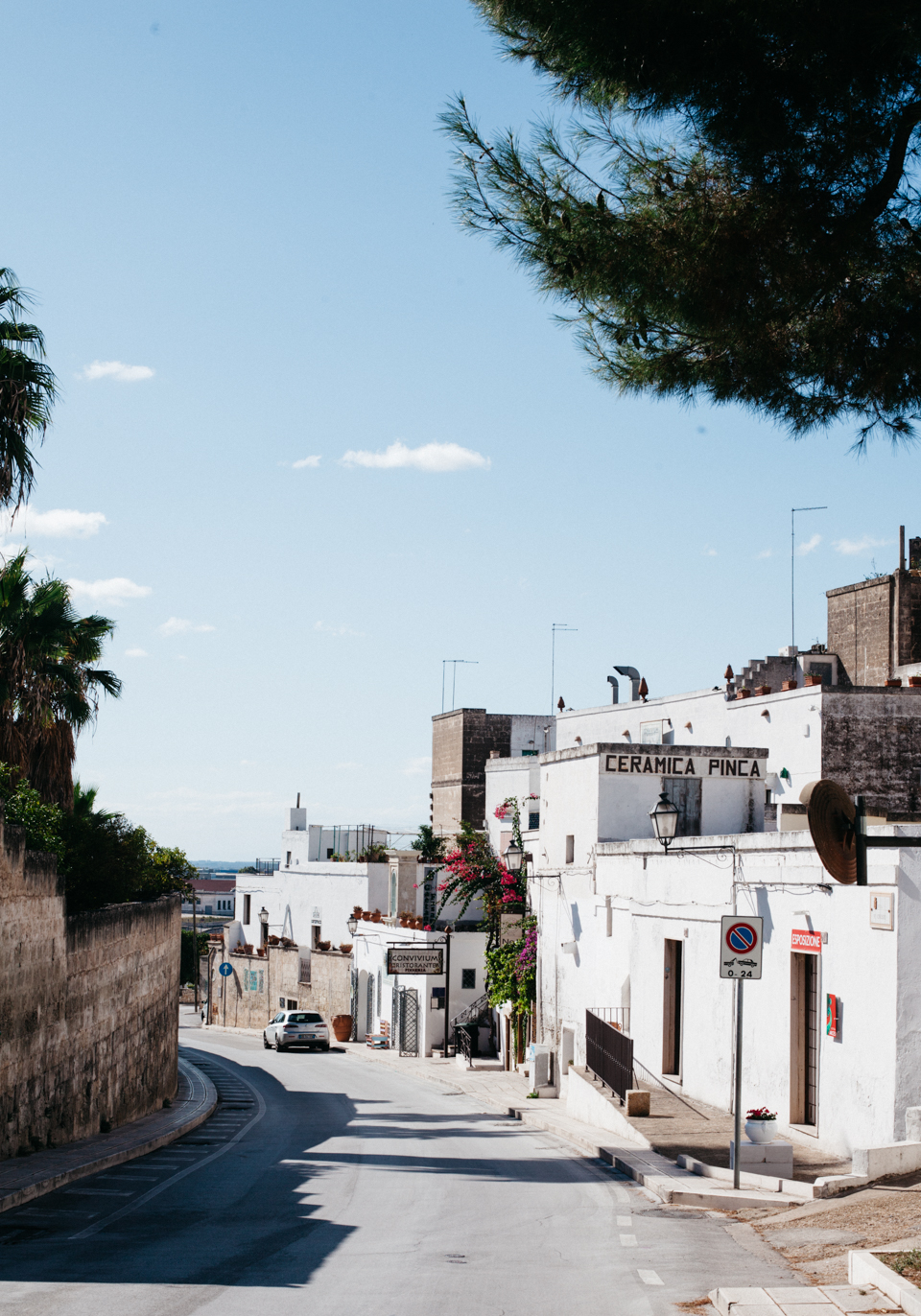 It was serendipitous that I read Patience Gray‘s recipe (which is more of a description of this beautiful summer ritual than actual measurements) for “salsa doppia” (bottled tomato sauce and fresh tomatoes in layers over orecchiette and a shower of pecorino cheese) while visiting Grottaglie in the province of Taranto in Puglia, a small, somewhat unglamorous town that has been known for centuries for its artisan ceramic production. Gray describes the oversized, shallow salt-glaze dishes typical of Grottaglie’s ceramics – a communal serving bowl where the pasta for the entire family was “poured, dressed and then despatched, each member attacking it with a fork.”
It was serendipitous that I read Patience Gray‘s recipe (which is more of a description of this beautiful summer ritual than actual measurements) for “salsa doppia” (bottled tomato sauce and fresh tomatoes in layers over orecchiette and a shower of pecorino cheese) while visiting Grottaglie in the province of Taranto in Puglia, a small, somewhat unglamorous town that has been known for centuries for its artisan ceramic production. Gray describes the oversized, shallow salt-glaze dishes typical of Grottaglie’s ceramics – a communal serving bowl where the pasta for the entire family was “poured, dressed and then despatched, each member attacking it with a fork.”
I was in Grottaglie with Alice Adams of Latteria Studio, a good friend and food stylist who I’ve worked with on two of my cookbooks, Acquacotta and Tortellini at Midnight. We were doing a workshop together with Saghar Setareh at Masseria Potenti and Alice was leading the group on a day trip to Grottaglie to check out the behind the scenes of her favourite botteghe in the renowned ceramic town. I recognised instantly a stack of the ancient dishes that Gray described in the beautiful ceramic museum-bottega, Casa Vestita, some pieced back together, the large cracks running through them like creases on the palm of your hand.
Later, in Nicola Fasano’s ceramic workshop, I found entire dinner sets decorated, like the hand drawn illustration accompanying Gray’s salsa doppia recipe, with a rooster at the bottom of the plate. It is the symbol of Nicola Fasano’s ceramics, which Franco Fasano started making in the 60s after discovering a collection of perfectly preserved rooster plates that his grandparents had owned. He, too, recounted to me that families used to eat from the same large plate – huge, if you were to feed a family of ten like Franco’s. The image of the rooster, he said, was to trick you into thinking you might be eating more than what was actually on the plate. The dish may not have had chicken – or any meat – in it, but you could see the drawing on the bottom of the plate and imagine it did. A reminder that we eat with our eyes too.
The tradition of these very characteristic dishes from Italy’s deep south is at once practical, nostalgic and beautiful, even the everyday objects. I thought it would be nice for you to hear about what makes Grottaglie so special from Alice, who took me there twice on our trip together. Below you’ll also find my recipe for Patience Gray’s description of salsa doppia, which is from Tortellini at Midnight, perfect for the glut of tomatoes that we have right now in Italy.
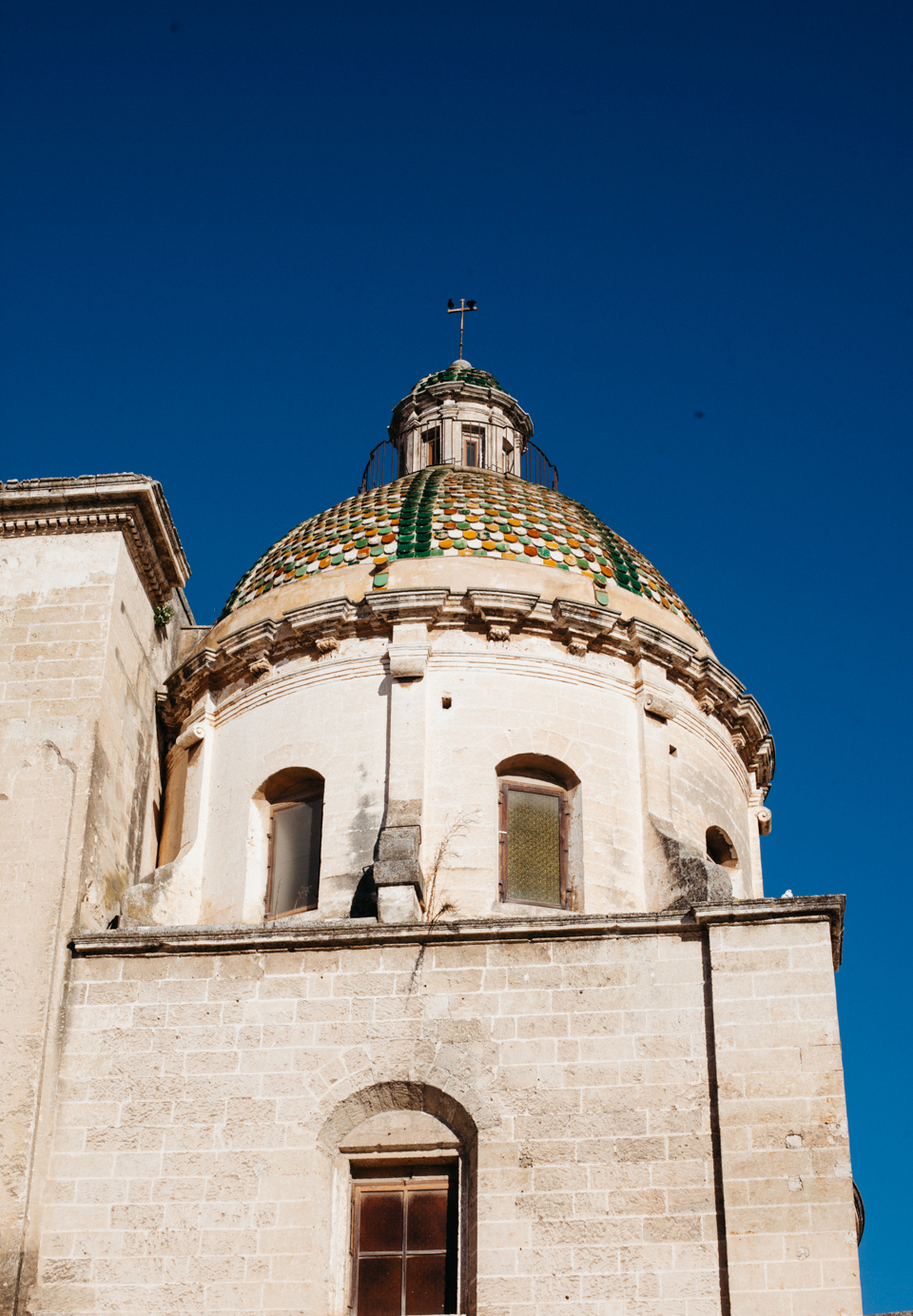
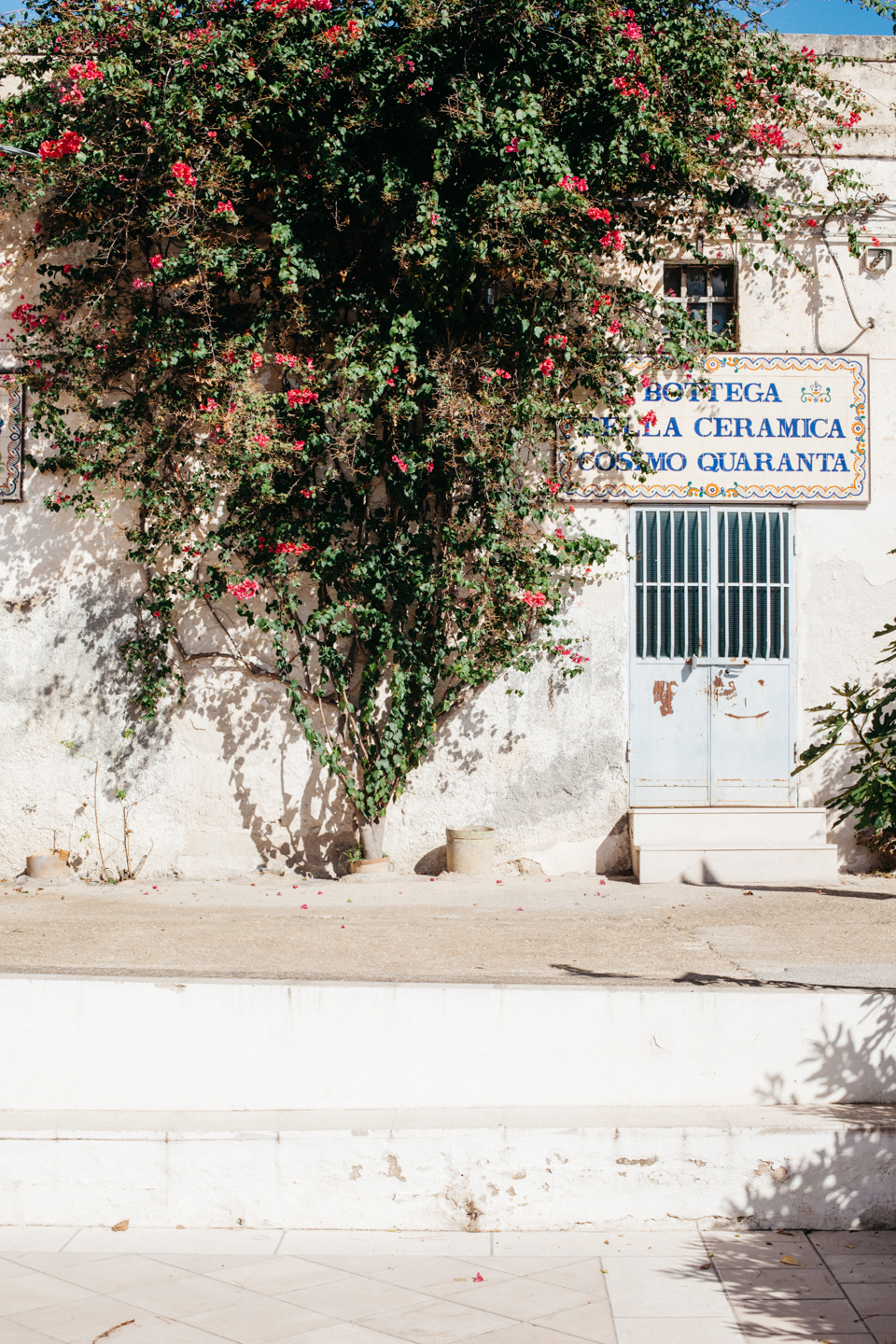

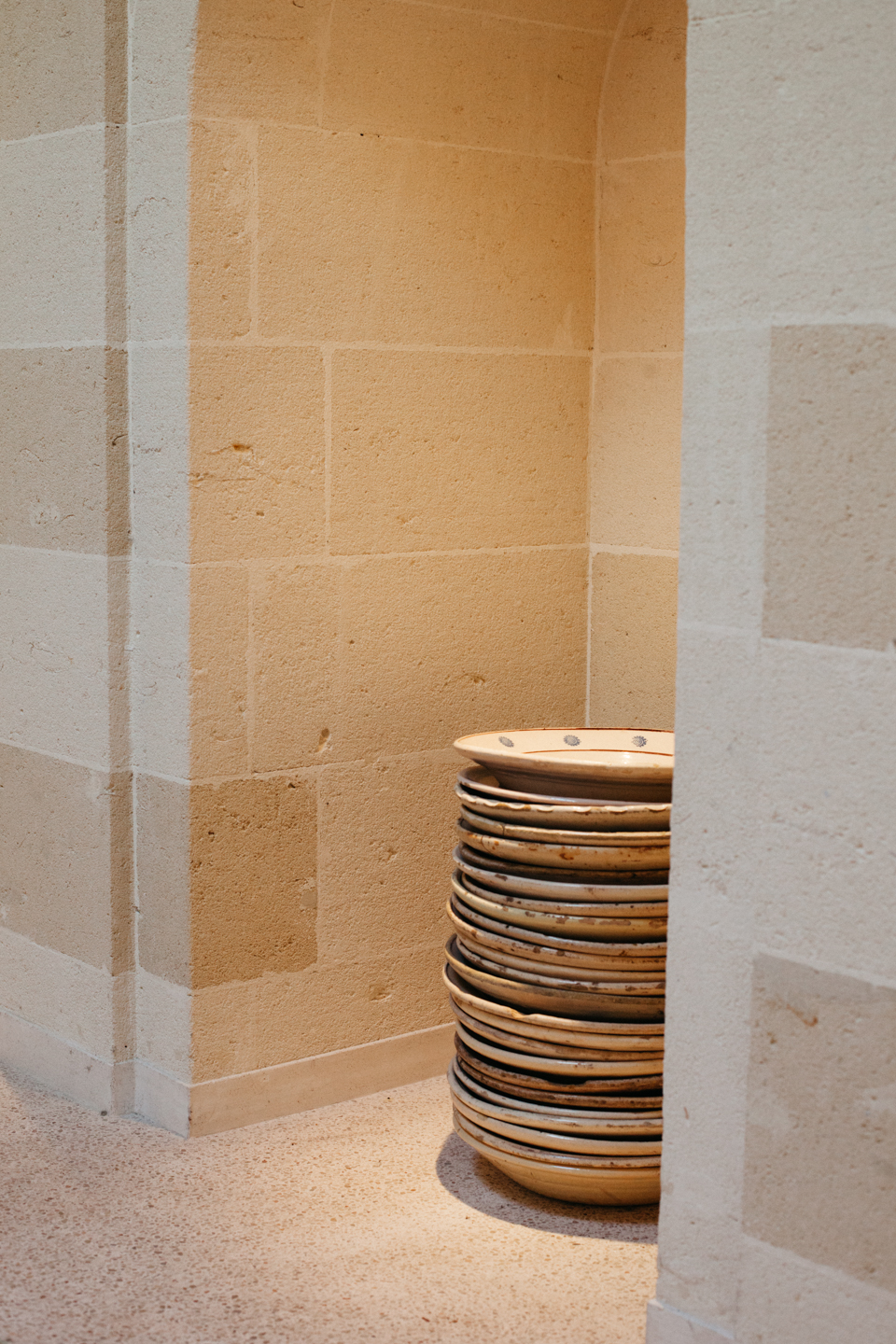
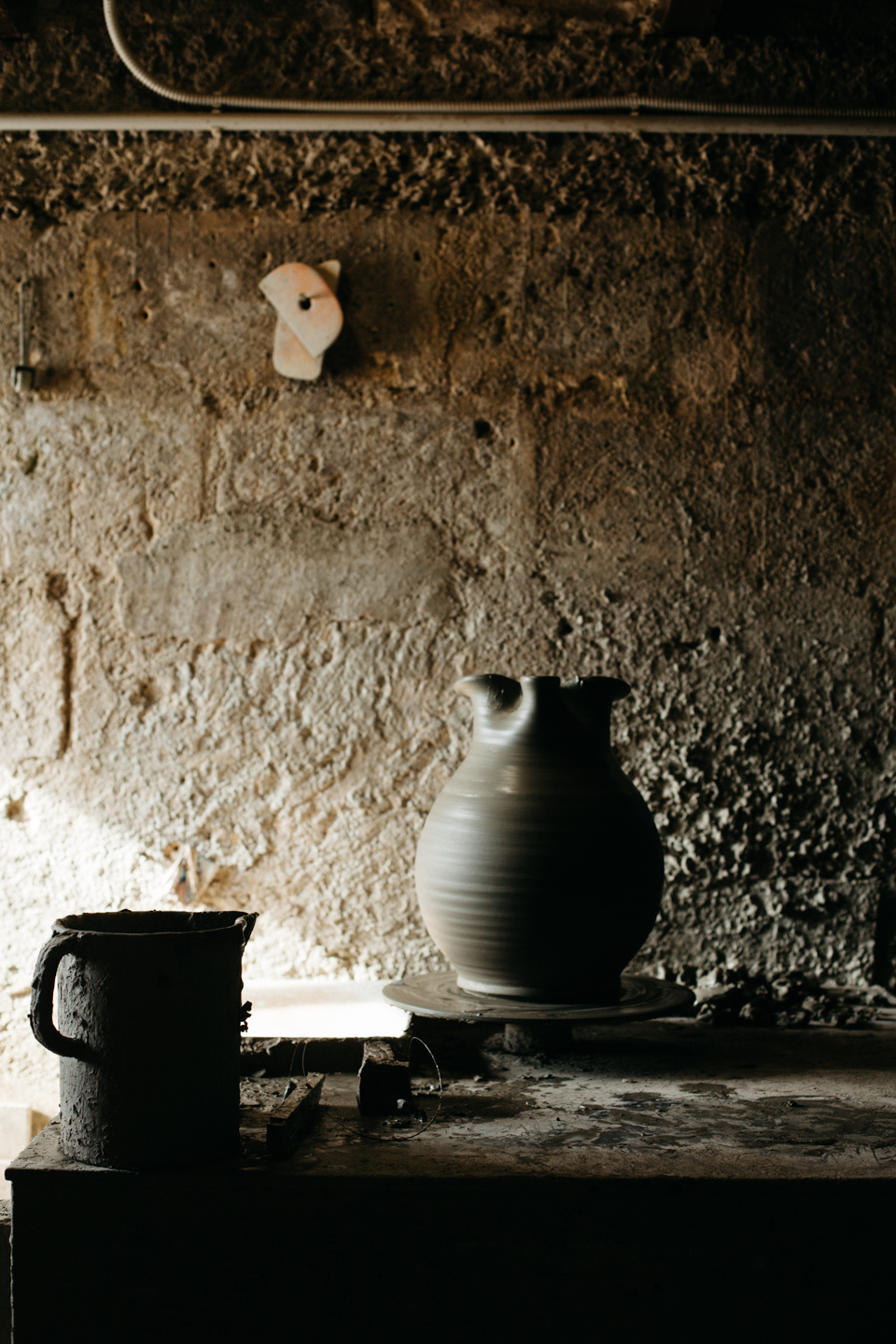
ED: What drew you to Grottaglie?
AA: I had been collecting Italian ceramics for a few years and kept turning up – mainly at second hand mercatini — lovely simple terracotta pieces with the stamp CNF [Ceramiche Nicola Fasano] Grottaglie on them. I worked a bit with a stylist called Emanuela Rota and she had a lot of CNF pieces, all simple plates and bowls with the most beautiful single colour glazes, and perhaps a hand painted line or a textured edge. I knew that Grottaglie was in Puglia, and already loved the splatter ware that comes from the south, so Grottaglie was on my radar. Then I went back to Australia and turned over one of the green terracotta plates that mum and I had found together in the mid 80s, plates that had seen so many family lunches under the persimmon tree at Jamieson, and there it was again, the CNF stamp. The following June Leonardo (kindly) suggested that we dedicate a day of the family Puglia vacation to a Grottaglie expedition. I was almost nervous as we drove into town. Was I going to be disappointed? Were the workshops going to live up to my high hopes? The town, and the Ceramics Quarter, lived up to all those years of expectations, at every corner there was something to look at; here a terrace with a view over the maiolica tiled dome, here a ramp of stairs with hand painted tiles, over here piles of plates in every hue. Even my travel companions enjoyed it enough to come back for more time in the botteghe after an afternoon dip in the Ionian Sea.


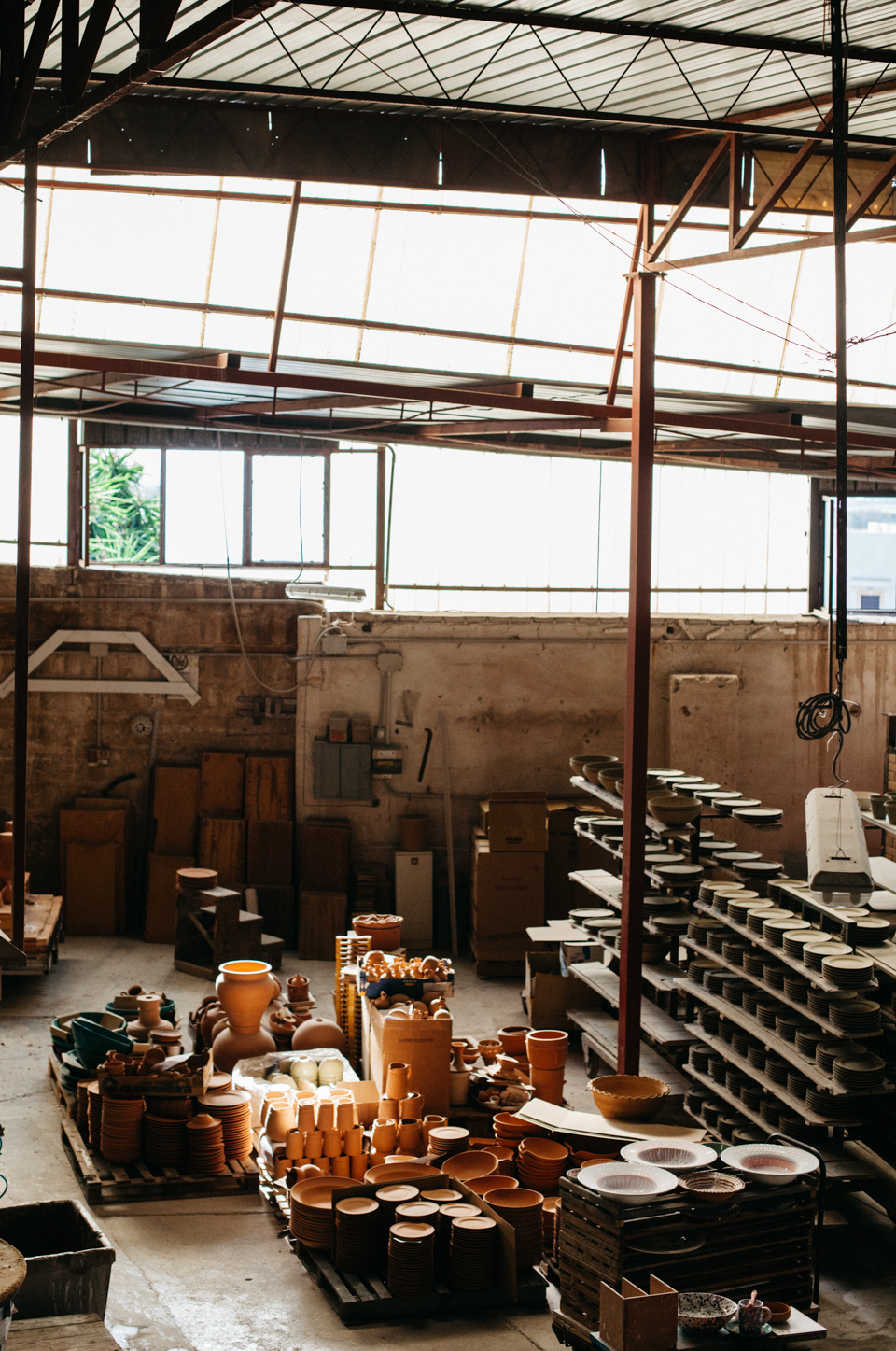
ED: You’re absolutely right, it’s a ceramic-lover’s dream! Can you tell me about the kind of pieces that are really special to Grottaglie’s ceramic tradition, that are instantly recognisable as coming from there?
AA: There are two distinct traditions in Grottaglie; the caposanara or ruagnara, which concentrates on the production of amphorae, kitchen utensils and everyday objects, and the faenzara which concentrated on the more sophisticated world of highly decorated objects in the majolica tradition. The latter are also called bianchi or white wares because of the white glazed base on which they are decorated. Both of these traditions are alive and well in 21st century Grottaglie. I’m more attracted to the simple workaday objects like the straight sided bowls, which are made up to a metre across and were used for domestic activities like crushing the tomatoes for preserving. And the flat broad plates with the flower dot motif that hark back to the time when families would share a meal from the same bowl. Then there are the decorative pieces like the Pumo, an elegant single coloured glazed cone with feathers, said to bring good fortune, and which are to be found on all the balconies around the historic centre of the town.
ED: I am absolutely with you on the everyday objects. The flat broad plates you speak about is exactly what this huge bowl of orecchiette below needed — and you had that perfect plate in your collection (thank you)! I am absolutely crazy about the splatterware. What are your personal favourite pieces from Grottaglie?
AA: Before we visited Grottaglie as part of the Masseria Potenti Workshop, you put me onto a post by Carla Coulson that became the next step in discovering Grottaglie [yes! This one, a dream, all of Carla’s favourite addresses]. The Vestita Family have one of the most magical workshops (Bottega Vestita) but also open their villa to share the treasures uncovered when they renovated the property, including Roman floors and a 13th Century chapel, hidden from view for centuries by a medieval oven. Hundreds of antique ceramics are displayed in a small family museum that runs of the ethereal garden [photos below!], where capers run over Roman columns and huge amphorae climb the walls. In the displays there are countless examples of dining ware, both from everyday and Patrician traditions. Watching the styles change over the centuries is fascinating, as is discovering similarities that have crossed the sea. The curved edges on the 19th century plates have almost the same lines as those of classic Wedgewood plates my mother serves cake on. I later bought a couple of hand thrown plates at Bottega Vestita, glazed in pure white, that echoed the style of the 18th century tableware on display at the museum. They have made it into lots of photos, including Tortellini at Midnight. Then I have lots of simple coloured and splattered pieces from CNF that get lots of use, and a very pale pink oval platter that all food looks beautiful on, also from CNF. The bowls about 15 cm across are perfect for putting over a lump of pasta dough as it rests, they are just snug enough.
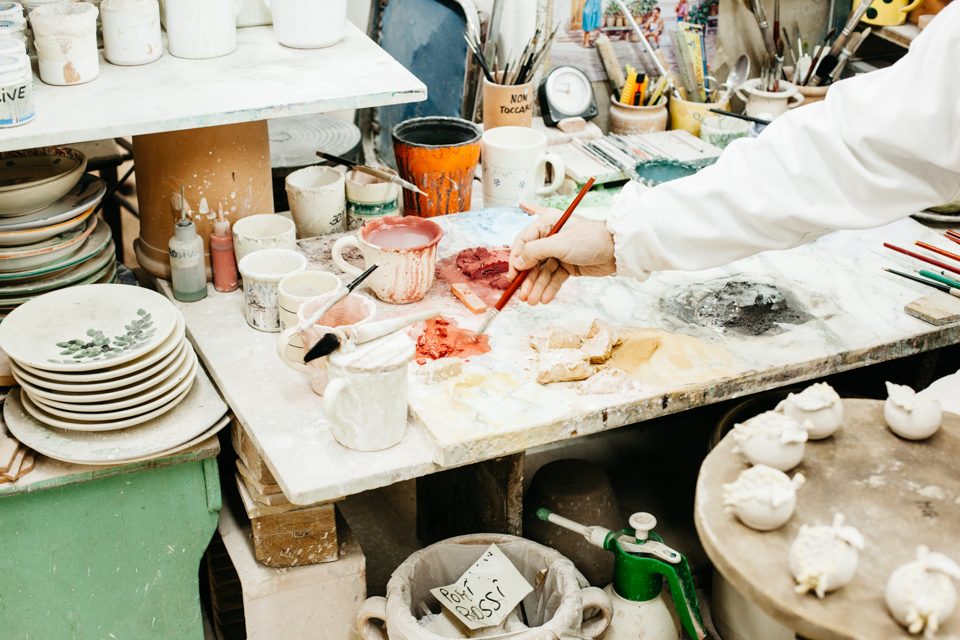



ED: Any favourite shopping tips for ceramics in this area?
AA:My favourite makers (and at both you can watch the artisans at work if you visit at the right time) are Ceramiche Nicolo Fasano, or CNF, Via Francesco Crispi 6 (ask to see the workshop, it’s up the hill from the shop), and Bottega Vestita, Via Santa Sofia 23. Also Antonio Fasano and Cinzia Fasano, and many others, there are roughly 50 workshops. The Grottaglie Ceramics Museum in the Castle at the top of the Ceramics Quarter is really interesting and full of artifacts from the period of Magna Grecia onwards. The Casa Vestita Museum if it is open (check their facebook page for planned openings) is incredible.
ED: Thank you Alice! Before the pandemic Alice was hosting some expeditions to the second hand markets in Puglia and more trips to Grottaglie, so if you are passionate about collecting ceramics you will want to keep in touch with her. You can read more about Grottaglie on her blog here.

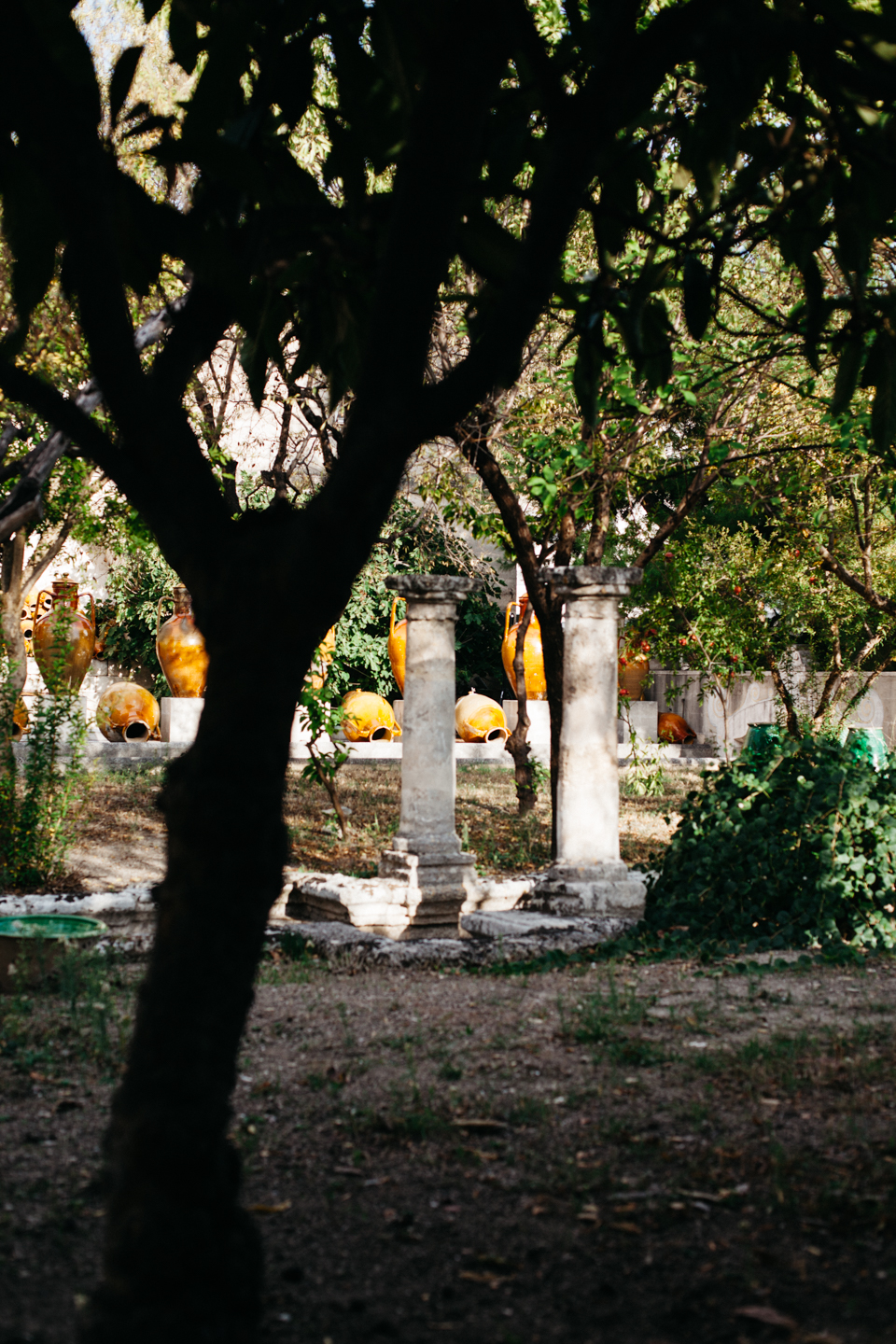
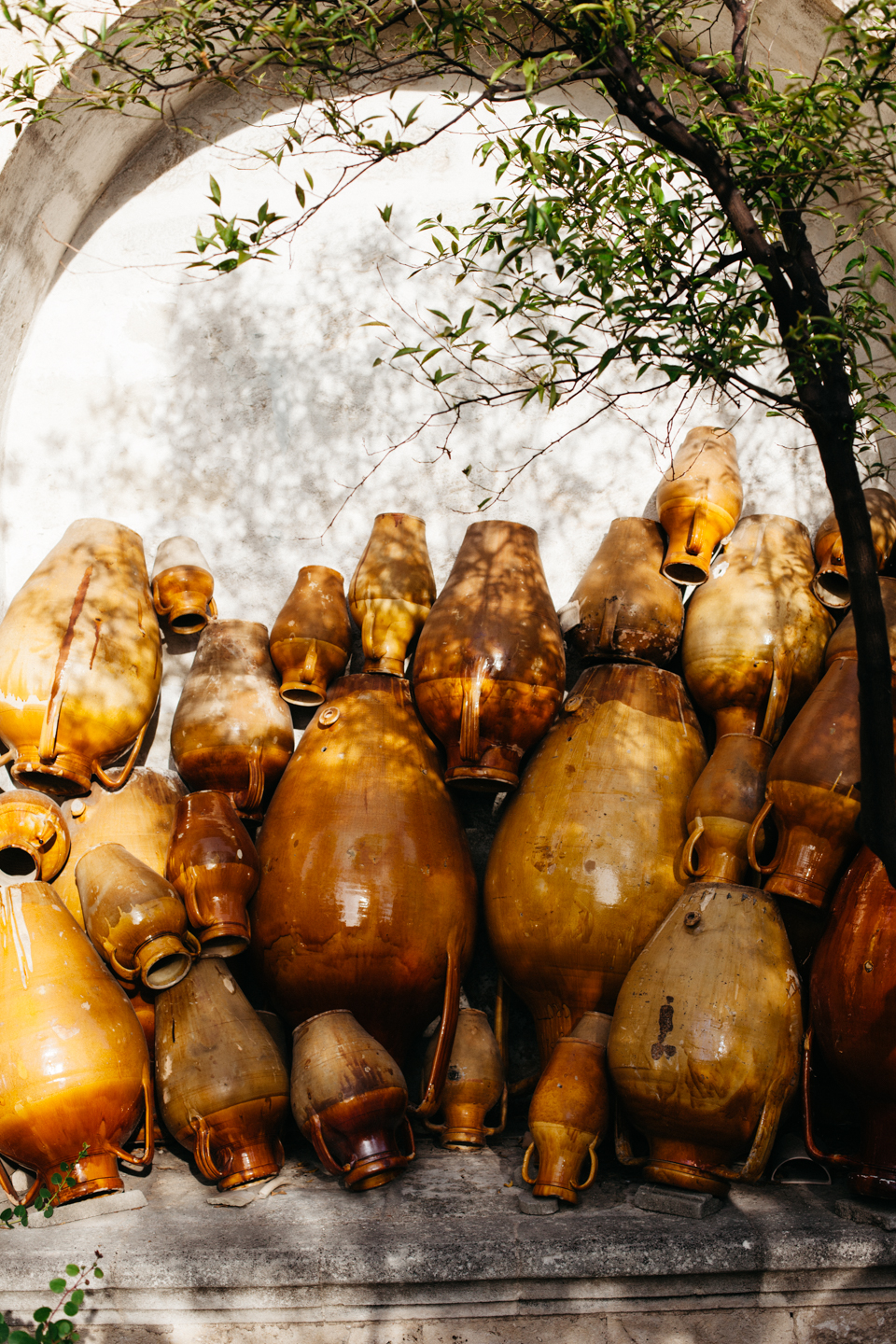
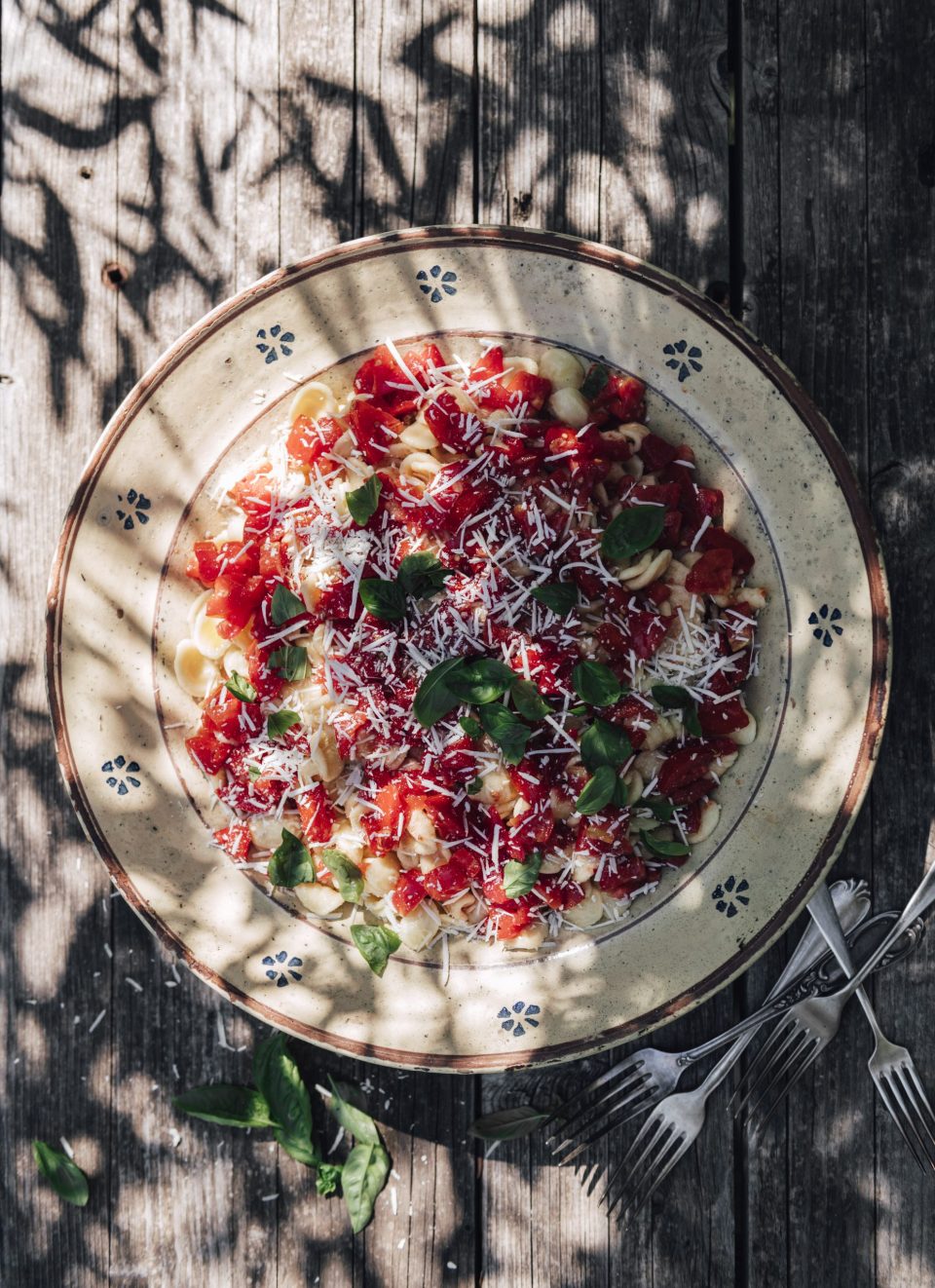
Salsa Doppia (Double Tomato Sauce)
Although the ancient custom of eating from the same bowl has now disappeared, Gray’s salsa doppia, which involves layers of homemade, bottled tomato sauce, pecorino cheese, orecchiette (or your favourite short pasta) and just-picked fresh tomatoes (which in her recipe are quickly cooked but I prefer to leave raw), is one worth repeating – I like to do the layering in a pretty bowl to present at the table and then portion out this summery pasta dish into bowls. This recipe was originally published in Tortellini at Midnight (this photograph is by Lauren Bamford, styled by Deb Kaloper and features one of the huge antique Grottaglie plates from Alice’s collection!).
Serves 4
3 ripe tomatoes, diced
1 garlic clove, finely chopped
4-5 tablespoons extra virgin olive oil
1 small onion, finely sliced
400 grams tomato passata (puree)
handful of fresh basil leaves
320 grams of short dried pasta such as orecchiette or penne
40 grams pecorino, ricotta salata or parmesan cheese, finely grated
salt and pepper
Combine the chopped fresh tomato with the garlic, about half of the olive oil and a good pinch of salt. Stir well and set it aside to marinate so that the juices are drawn out of the tomatoes.
Put on a large pot of water to boil.
Prepare a tomato sauce by gently heating the onion slices in the rest of the olive oil with a generous pinch of salt. I like to use a wide pan with curved sides and a bit of depth. Over low heat, it should take about 5-7 minutes for the onions to begin to sizzle and soften without colouring – add a splash of water or turn down the heat if they begin to brown. Add the passata together with about 80ml of water and a few whole basil leaves. Season with salt and pepper and let simmer over medium heat for 10 minutes or until thickened. Set aside.
Add salt to the boiling water and tip in the pasta. Cook the pasta until al dente, then drain.
In a large, shallow serving bowl, layer: half of the pasta, half of the grated cheese, the tomato sugo, followed by the rest of the pasta, the rest of the cheese and the fresh tomato mixture with all the delicious juices. Top with as many fresh basil leaves as you please and present it to the table like this. When serving at the table, give the whole thing a bit of a stir so that each portion gets a bit of everything.




Comments
Oh my!! Those bowls & plates are stunning!!! I always love to serve our pasta in a beautiful bowl for presentation. 😍
We do eat with our eyes too, don’t we? 🙂
Emiko, what a delight to see your visual diary of Grottaglie, especially the antique white wares from Casa Vestita. To everyone who reads this post, you MUST make the orecchiette with salsa doppia, my all time favourite (and I have a few) of all of Emiko’s recipes. Here’s to our next ceramics hunting trip, Alice x
Thank you Alice for so generously sharing your special finds with us on that trip — and now here on the blog! I hope we can do it again soon xx
I really enjoyed this Emiko, thank you. I do wonder, given Covid, if you and Alice might know where to find such plates in Aus? There are a lot of copies and I do like to support genuine outlets who acknowledge artisans. Or do you recommend visiting a website for an inline purchase direct from the maker…so many questions. My apologies. Warmly Lee
I know you can get them in Australia – I recognise the CNF ceramics anywhere and have seen them via Alex and Trahanas (https://alexandtrahanas.com/collections/ceramics) and Atelier Studios (https://www.instagram.com/atelier_studios/) and I’m sure there are others. If you would like to order directly through the artisans themselves, you can request a catalogue and they do international shipping; their website is: https://www.fasanocnf.it/en/
P.S. Never too many questions! 🙂
Thank you Emiko and Alice for such an excellent bit of armchair travel.
It’s such a treat to see into the studios and workshops, and of course to see the pottery.
I’d love to get here someday, and to prowl the museum. For now I will console myself by making the Orecchiette with the doppia salsa ❤️
I agree, seeing inside the studios is the best! You so have to get here one day x
I have a small bowl with a flat lid, which has the name of the potter. It is A. Morrone and the city is Grottaglie (Ta). The piece is in excellent condition. I found the piece in my mother’s Buffett when she passed in 2011. It could have actually been my grandmother’s before. Is this artist known to anyone?
Thank you for a response.
There are so many ceramic workshops in Grottaglie but I tried to look for Morrone and found just a workshop for Carmela Morrone and found Antonio Morrone’s name on Grottaglie’s ceramic mural on Via Crispi along with other ceramicist from the town! I hope that helps.
What a lovely account of your time in Grotagglie! My husband and I will be visiting the area for the first time this coming week and we can’t wait to explore the many workshops in the area. It was your blog that inspired us to stop by! Out of curiosity if we were to purchase some pieces, do you think it would be best to hand carry them or ship them?
Warmly,
Lily